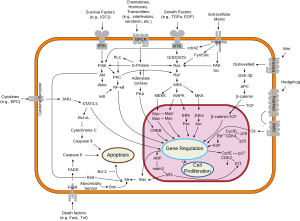Description
General
guidelines
Diarrhea
Diarrhea is an abnormal increase in stool liquidity
and frequency (4 to 6 stools or more per day
over baseline) with or without nocturnal bowel
movements and/or moderate abdominal
cramping. Diarrhea is a common side effect of
many cancer regimens. It can cause depletion of
fluids and electrolytes, malnutrition, dehydration,
and hospitalization and therefore can interfere
with cancer treatment, causing dosing delays or
reductions.
1
Patient education strategies
•
Emphasize the importance of maximizing oral
hydration strategies to avoid dehydration and
electrolyte imbalances
2
•
Educate patients about the likelihood that diarrhea
will develop
3-5
Management tips for patients
•
Diarrhea may be managed through diet as well
as pharmacologic treatment when necessary,
based on the clinical judgment of the treating
healthcare provider (HCP).
1,3,4
The first step in
treatment is dietary management
3,5,6
:
–
Yogurt containing probiotics
–
Soluble fiber
–
Small but frequent meals
–
Fluids, such as water, diluted cranberry juice,
broth, decaffeinated tea or coffee
•
Over-the-counter and Rx agents may also be
used, according to labeling
1,3,4
Hypertension
Hypertension is the term used to describe high blood
pressure (BP). In general, hypertension is repeated
BP elevation exceeding 140 mm Hg systolic blood
pressure (SBP) and 90 mm Hg diastolic blood
pressure (DBP).
7
Hypertension is a commonly
reported AE in cancer patients receiving antivascular
endothelial growth factor (VEGF) drugs.
8
Patient education strategies
•
Take antihypertensive medications as prescribed
4
•
Recognize signs of potentially dangerous
high BP (eg, severe headache, shortness of
breath, nosebleeds)
9
•
Follow healthy lifestyle choices: regular exercise,
weight control, moderate alcohol consumption,
sodium restriction
4



